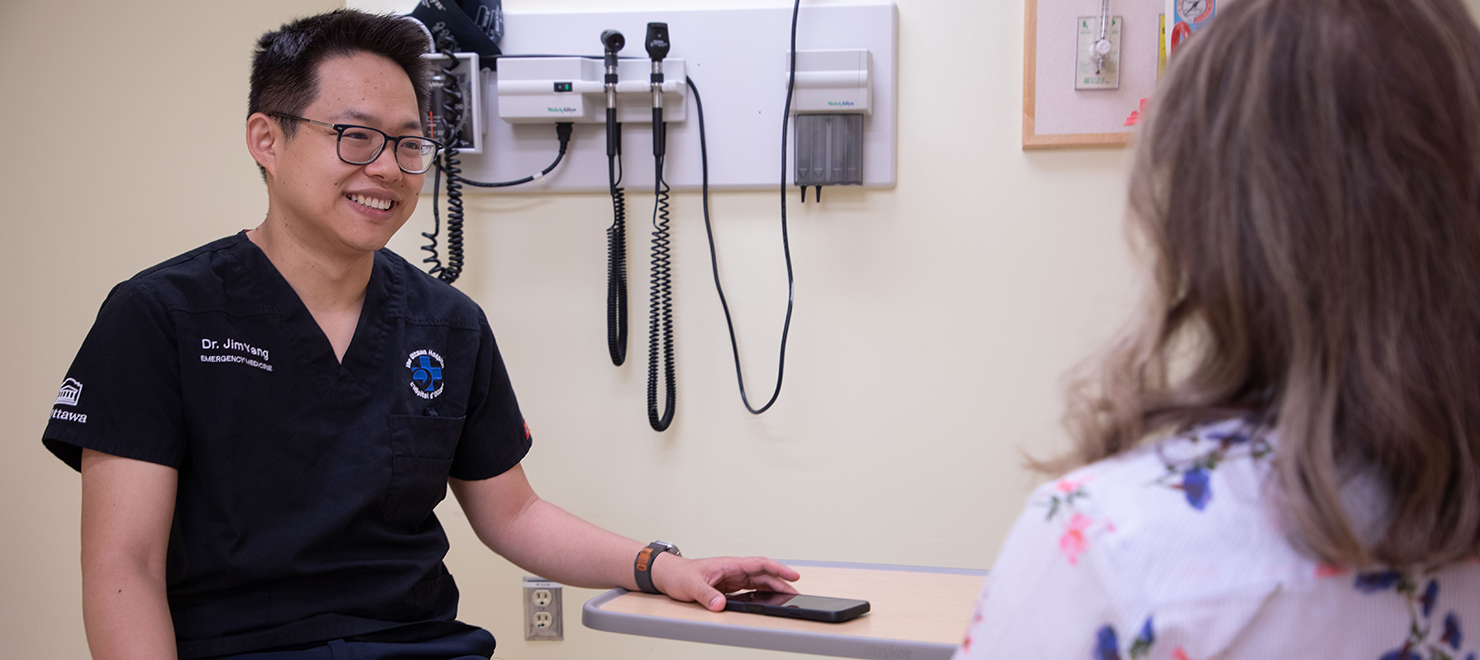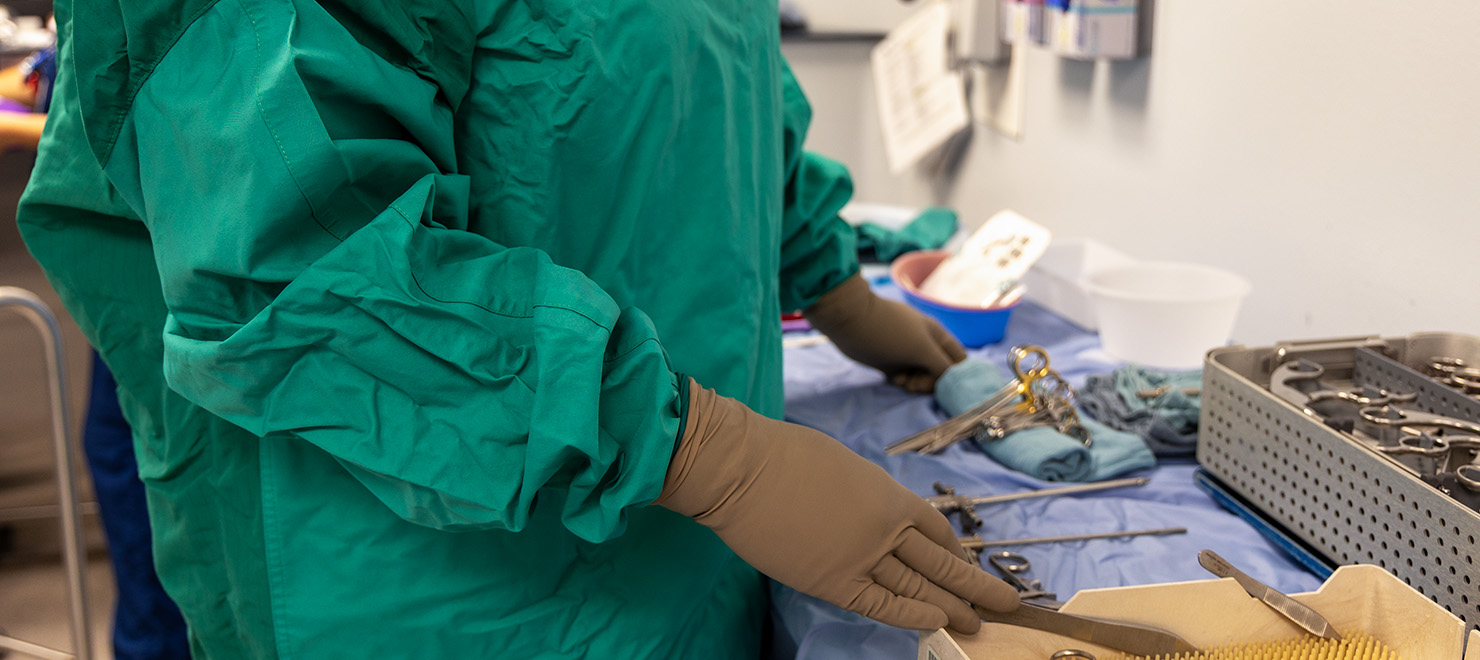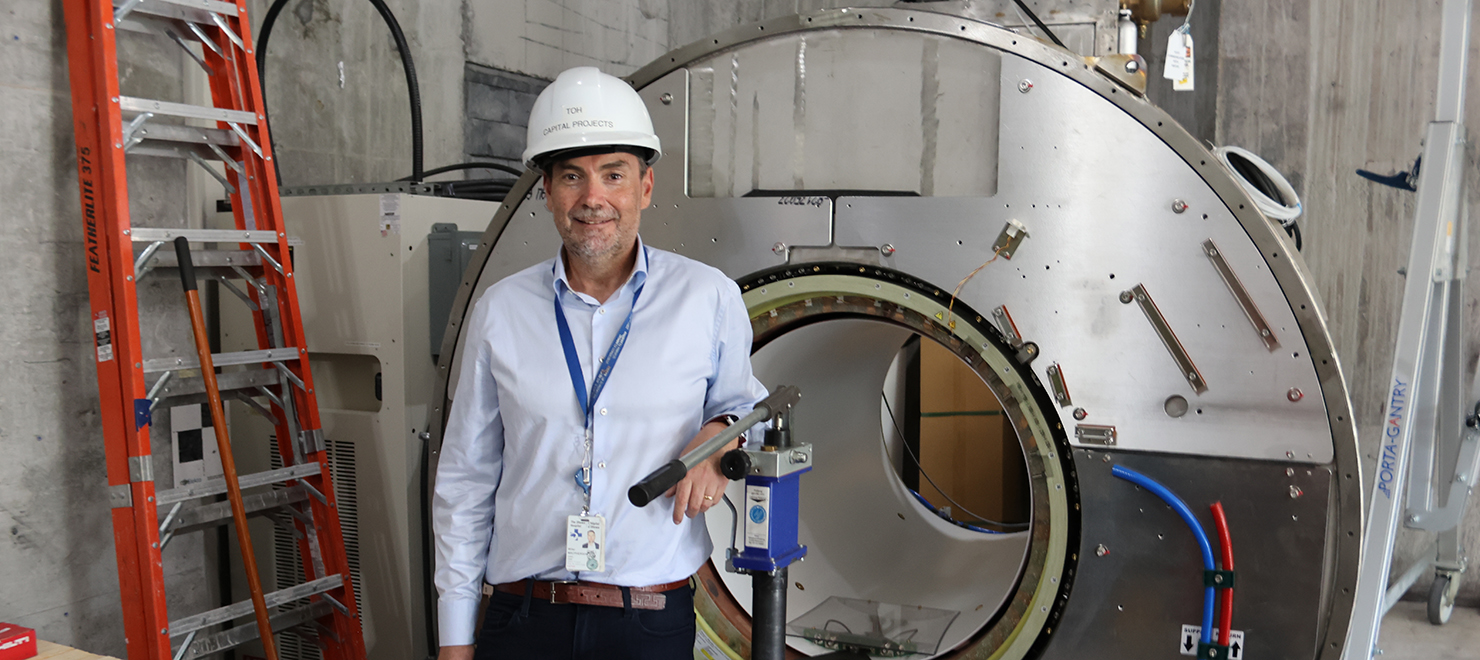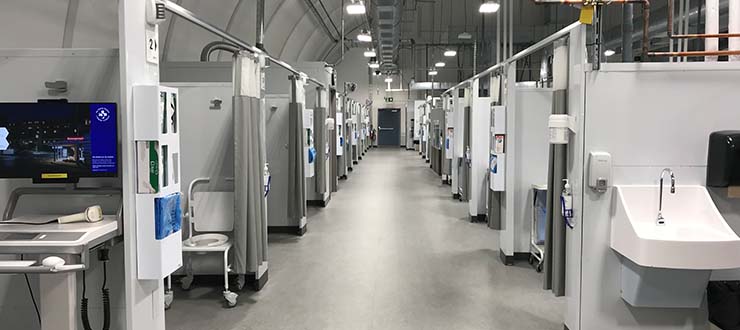
Forty hospital beds. An impressively high “cathedral” ceiling. A bright, warm and organized space. In some ways, this new unit looks much like other inpatient units in the main building of The Ottawa Hospital, but it has something a little extra: an undeniable energy that comes from knowing you are part of something new.
Meeting community needs
The Offload Medicine Transition Unit (OMTU) is a new 40-bed temporary structure located at the Civic Campus of The Ottawa Hospital. Funded by the provincial government and constructed in just nine weeks, the OMTU will help expand hospital capacity, decrease ambulance offload times for paramedics and get patients into hospital beds faster once admitted.
It welcomed its first patient on January 4.
Inside the OMTU
The OMTU includes its own ambulance intake for patient offloading, an infection control isolation room, four staff stations, a staff lounge, washroom facilities and showers. It has proper air ventilation and is fully climate controlled
Each patient bay has oxygen and suction, a nurse call system, and emergency power. Like the main hospital, the OMTU has modern medical technology, wi-fi for patients and wired internet connections for computers on site that are connected EPIC, the hospital information system. Staff and patients can access the main hospital’s Emergency Department and Intensive Care Unit (ICU) through an above-ground tunnel.
The staff at the OMTU include doctors, nurses, registered practical nurses, physiotherapists, social workers, orderlies and others that you might expect inside any other patient unit. Staff supporting the OMTU underwent simulation training for emergency code calls before the unit opened, just as they would have before opening any other new unit.
Patient experience a priority
Although the focus was on maximizing safety and care, the patient experience was also a priority. Each patient bay is slightly bigger than what you would typically see in the emergency department. Stretchers are fitted with thick gel mattresses. There are hooks for coats and shelves in each bay for belongings. There is a dimmable light above the bed and a whiteboard on the wall to keep important information.
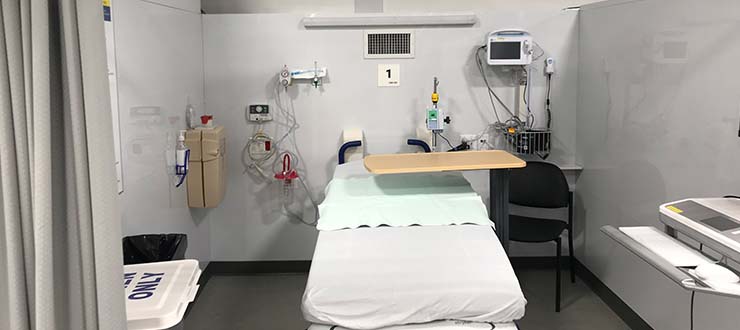
“It was really impressive, how high the ceilings were, how everything came together in nine weeks,” said Kyle Gantner, Acting Clinical Manager for the OMTU.
“Patients seem to like the semi-open concept,” said Jeanne Millons, Acting Clinical Care Leader for the OMTU. “The rooms don’t have a roof over each of them, so there are things to look at if you want to be distracted.”
Gantner and Millons each lay down in patient beds themselves before the unit was open to get a first-hand view of what it would be like for a patient.
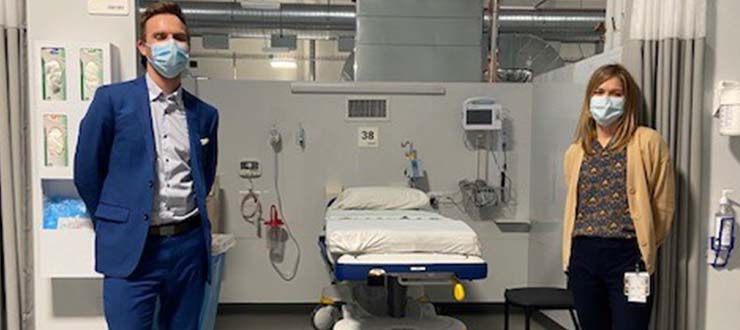
Despite the semi-open concept, patients in the OMTU can still feel a sense of privacy. Sound does not carry easily between patient bays or into the corridor.
Teamwork brings the design to life
The concept, design, layout, construction and ultimate operation of the OMTU was the result of impressive teamwork from many groups and individuals. Kathleen McGarragle is the Emergency Management Officer at The Ottawa Hospital and co-project manager for the unit. She and Dwight Breault, Senior Project Manager of Capital Projects, led the project on behalf of the hospital. They worked closely with Colliers, Infrastructure Ontario/The Ministry of Health, BLT Construction, and several design and consulting firms.
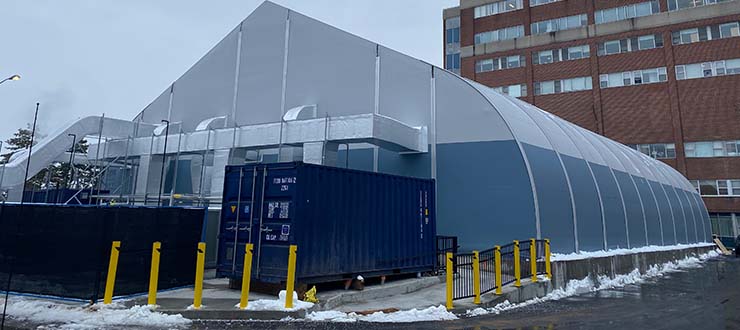
Many hospital departments and teams offered their expertise and support as well. Hospital leadership, clinical teams, Emergency Management, Capital Projects, Facilities, Planning, Infection Prevention and Control, Care Environment Transportation, Environmental Services, Materials Management, Nutrition and Food Services, DS/IT, Biomedical Engineering, Fusion, Parking Services, Protective Services, the Safety Office, The University of Ottawa Skills and Simulation Centre and the Simulation Patient Safety Program, the Cancer Program, Accessibility Services, Occupational Health and Wellness, the Communications Department and many others worked in concert to make sure everything came together.
From a health-care standpoint, doctors, nurses, infection prevention and control experts, clinical care leaders, directors and others from the Emergency Department and inpatient units all had a hand in determining what the space would look like and how it would function.
“The Ottawa Hospital really came together with different departments doing everything they could to help,” said McGarragle. “We went live on January 4, so the biggest push was over the holiday period. That means a lot of people worked extra hard to get it done.”
Read added, “It’s a great example of living our vision of providing world-class care, exceptional service and compassion just as we would want for our loved ones. Everyone worked together to achieve a goal that would support our patients and our teams, especially during a very challenging time.”
A strong community partnership
Another important element to the project’s success was the partnership between the hospital and the community.
“Even though we knew that the OMTU would be a great benefit to the community overall, we recognized that constructing it would have an impact on the local community,” said Joanne Read, Executive Vice-President of Planning and Development for The Ottawa Hospital. “We wanted to establish open lines of communication throughout the project to make sure that the community had a voice and we could try to minimize any impact on them.”
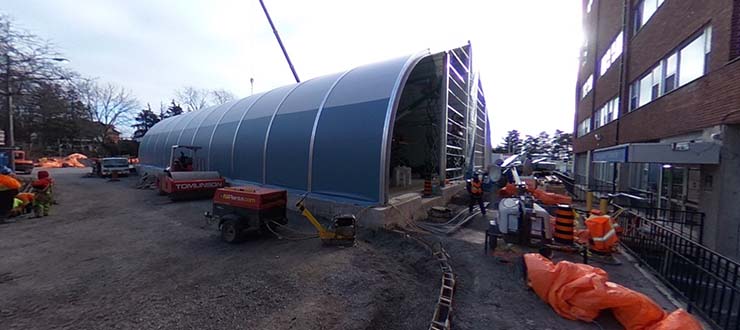
The project team also worked with hospital departments and services that would be impacted most by the construction, including the Academic Family Health Team and programs in Grimes Lodge.
Constant and open communications was a priority from the start and contributed to the project’s success.
“My objective was to make sure that everyone that was supposed to be included was included,” said McGarragle. “If I needed to follow up with a group or team, I did, without fail, every time.”
A special atmosphere
Opening a new hospital unit is a special occasion, and it often comes with a sense of excitement among staff. That is especially true in this case because the staff were engaged in the design of the OMTU from the very beginning.
It was really impressive, how high the ceilings were, how everything came together in nine weeks.”
“We were part of building something from the ground up,” said Milions. “From construction, to making decisions about how the room looks, to hiring and onboarding a whole new staff, it kind of feels like we are in this together in this new journey.”
Gantner feels the same way.
“We got to start from the beginning. We get to build a team and work as a team as the OMTU evolves. I think, for me, that’s what makes the OMTU special. We get to set it up together and work together to make it a very good environment for both the patients and the staff.”
And that sense of shared purpose has carried over into the culture in the unit.
“We have a very positive team,: adds Gantner. Staff are very engaged. Its an environment open to change. We focus a lot on teamwork.”
A culture of constant improvement
Even though the OMTU has been open for a little more than a month, the staff have settled into a groove. Still, staff are continuously looking for opportunities to improve how they deliver care.
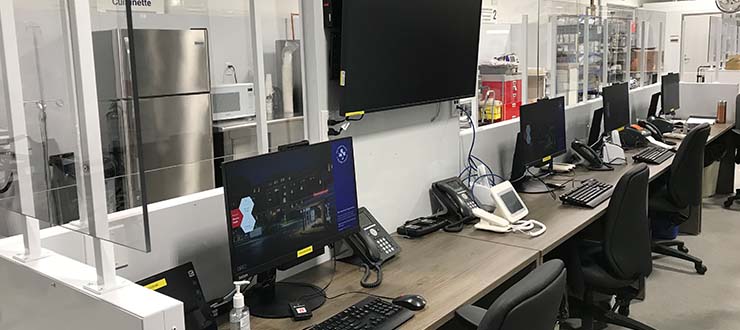
“It’s evolving on a daily basis,” said Gantner. “We’ve evolved lots of things. From the layout of supplies and the types of supplies we use, to how nurses and registered practical nurses work together to provide safe patient care. We lean on staff a lot to figure out what works best for them. We let them guide the evolution and we help facilitate change to make their space theirs.”
Here to serve the community
The benefits to the community are many. Its 40 beds help free up beds in the Emergency Department and on inpatient floors for patients who need that specialty care.
The OMTU will help to ensure that our community gets the care that they want and they deserve” said Millons. “It’s a success story for sure.”
And it wouldn’t have happened without an incredible amount of support.
“Thank you to everyone, the community, the staff, the patients, the project managers, everyone involved in planning and construction,” said Read. “It is safe, it is clean, it is warm, it is comfortable. We hope you never need to visit the OMTU yourself or with a loved one, but if you do, know that it is there for you.”

Support patient care and research at
The Ottawa Hospital
You might also like…
Less time charting means more time with patients: How The Ottawa Hospital is using AI to support patient care
“I’m seeing and treating more patients.” Find out how DAX Copilot, a powerful AI assistant, is helping our physicians cut down on paperwork, improve their own well-being and spend more time with patients.
New reusable surgical gowns a step towards greener operating rooms
The Ottawa Hospital is finding safe, innovative ways to reduce medical waste in its operating rooms by using more environmentally sustainable products.
“Crash testers”: Preparing our health-care teams for real-life emergencies
Swapping patients for manikins, our Simulation Patient Safety Program recreates medical emergencies right in our hospital, allowing our care teams to “crash test” their responses to cardiac arrests, respiratory failures, mass casualty events and more. Dive into this Q&A for a closer look at how this training program enhances patient safety and quality of care.
The place to be: The Ottawa Hospital recognized as one of Canada’s most admired corporate cultures
The Ottawa Hospital (TOH) has been named one of Canada’s most admired corporate cultures. Guided by compassion and commitment to patient care, TOH has developed a workplace culture that inspires confidence and trust in our employees, patients and family members.
2SLGBTQIA+ care at The Ottawa Hospital: A helpful guide
The Ottawa Hospital offers an array of services and resources to help meet the specific care needs of the 2SLGBTQIA+ community — including a provincial-first gender-affirming surgery clinic, a 24/7 care program for survivors of sexual assault and intimate partner violence, and a specialty clinic for medically complex patients seeking help on their transition journeys.
New radiation machine targets cancer with pinpoint accuracy — even as the tumour moves during treatment
“We can deliver a radiation treatment that’s exactly personalized for the patient on that day.” The Ottawa Hospital Cancer Centre is now one of the first in Canada to acquire the state-of-the-art MR-Linac radiation therapy system.


 To reset, hold the Ctrl key, then press 0.
To reset, hold the Ctrl key, then press 0.
